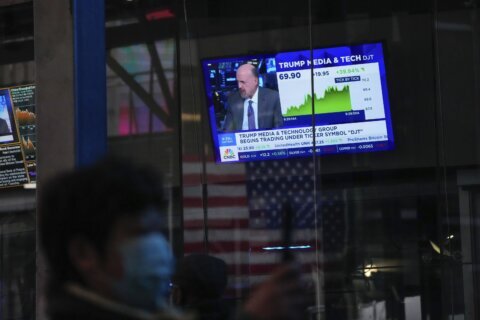It’s common practice for companies to acquire other firms to expand their market share and tap into new business opportunities.
Broadcom Inc.’s (ticker: AVGO) agreed-upon acquisition of VMware Inc. (VMW), Amazon.com Inc.’s (AMZN) acquisition of Whole Foods Market and Microsoft Corp.’s (MSFT) pending acquisition of Activision Blizzard Inc. (ATVI) illustrate how companies can grow by taking over other companies.
These acquisitions moved forward with the agreement of both parties. However, not all acquisitions start out smoothly. Some companies do not want to be acquired and would prefer to keep things as they are. While some corporations can stay intact, others are subject to hostile takeovers and are acquired against their will.
[Sign up for stock news with our Invested newsletter.]
Here’s a primer on hostile takeovers and some of the most interesting examples of this type of company acquisition from recent history:
— What is a hostile takeover?
— Hostile takeover examples.
— How hostile takeover attempts affect investors.
— How universal proxy cards impact takeover potential.
— Multiple acquirers on the same takeover target.
— How do targeted companies stop hostile takeovers?
What Is a Hostile Takeover?
Jessica Doyle, founder, principal and fractional chief communications officer of Two Creeks Strategies, explains how these takeovers often take place without a corporation’s approval.
“A hostile takeover is when a company targets another company for acquisition and moves forward to purchase it against its will,” she says. “This can involve the acquiring company talking to the target and making an offer that, if spurned, continues as a hostile takeover. This often proceeds without the approval or cooperation of the target company’s leadership team, board of directors or shareholders.”
She adds that the acquiring company may purchase a large number of shares or employ aggressive tactics that make the process potentially contentious and sometimes highly public.
Hostile Takeover Examples
Hostile takeovers have been prevalent over the years, and some of them end up becoming front-page news. Most investors and corporations engage in hostile takeovers due to activism, impatience over non-hostile attempts or the potential to discover new business opportunities.
Some hostile takeovers generate more fanfare than others, but these high-profile examples demonstrate the type of upheaval these takeovers can generate:
Spirit Airlines Hostile Takeover
After JetBlue Airways Corp. (JBLU) and Spirit Airlines Inc. (SAVE) didn’t reach a $30-per-share acquisition agreement in 2022, JetBlue opted for a hostile takeover. JetBlue’s proposed price per share was higher than what Frontier Group Holdings Inc. (ULCC) had offered in a previously approved acquisition. However, shareholders rejected the merger between Frontier and Spirit Airlines upon hearing about the hostile takeover attempt. JetBlue’s attempt to take over Spirit Airlines is still in progress.
Twitter Hostile Takeover
Tesla Inc. (TSLA) CEO Elon Musk’s hostile takeover of Twitter drew plenty of media attention and went through after a few months of back-and-forth battles. Musk ended up acquiring Twitter for $54.20 per share in a $44 billion deal. Shareholders were happy to realize a nice bump in the stock’s share price, but Twitter’s ad revenue hasn’t been the same since Musk took over. Twitter was recently rebranded as X.
Time Warner Hostile Takeover
In one of the most aggressive hostile takeover bids to date, America Online Inc., or AOL, capitalized on the dot-com boom to acquire many companies. Its largest acquisition was Time Warner, and it took place through a hostile takeover. AOL acquired Time Warner for $182 billion in 2000. The giant merger got decimated by the dot-com crash, though, and the AOL Time Warner conglomerate reported a $98.7 billion net loss in 2002. Time Warner split from AOL seven years later. AT&T Inc. (T) eventually bought Time Warner for $85 billion; AT&T later spun off those WarnerMedia assets to merge with Discovery in 2022, forming Warner Bros. Discovery Inc. (WBD).
[READ: The 10 Most Valuable Companies in the World by Market Cap]
How Hostile Takeover Attempts Affect Investors
Hostile takeovers involve one corporation attempting to obtain another corporation’s brand and assets with financial force. While the corporations duke it out, shareholders find themselves in an interesting position. The corporation attempting the hostile takeover has to appeal to investors. That’s the primary way a takeover attempt can generate enough votes from shareholders.
William Fiske, U.S. head of M&A and Contested Situations at shareholder consulting firm Georgeson, explains how corporations and investors attempting a takeover cater to shareholders: “The potential acquirer will continue to increase the offer price and extend the offer deadline to attract more acceptance from shareholders. The goal is to acquire a significant percentage of shares so that the potential acquirer can leverage their voting power to prompt the board into engaging in negotiations for a mutually agreeable deal.”
Acquirers establish a new price for shares through their hostile takeover attempts. If a stock is previously valued at $50 per share, and a potential acquirer offers to pay $60 per share, the stock will rise closer to the proposed acquisition price.
The stock isn’t likely to reach $60 per share upon an announcement, but the shares will get closer to $60 if a deal looks more certain. The potential acquirer can also buy shares at a premium to build its position. When shares are bought at a premium, it rewards investors who held onto those shares before the hostile takeover attempt became public news.
Traders can still join the game after a hostile takeover attempt gets announced. In the previous scenario, if a stock valued at $50 per share jumps to $54 per share on the news, there is still a $6-per-share profit up for grabs if the $60-per-share acquisition goes through. Some investors will wait patiently for an acquisition in the hopes of realizing the remaining $6-per-share profit.
How Universal Proxy Cards Impact Takeover Potential
Potential acquirers can seek additional pathways to a successful takeover, such as filling up board seats with their preferred individuals. The recently implemented universal proxy cards, or UPCs, can be helpful for potential acquirers and strengthen the involvement of shareholders.
The U.S. Securities and Exchange Commission describes the universal proxy card as one that lists “all director nominees of all sides in a director election contest,” allowing shareholders to vote through the proxy process the same way as they could by voting in person. Recently adopted rules require universal proxy cards to be used in all non-exempt director election contests, except those involving a registered investment company or business development company, or BDC.
“Because of UPC, investors and activists can more easily launch a targeted campaign against a single or several director seats and potentially win one or more seats,” Fiske explains.
Multiple Acquirers on the Same Takeover Target
Although it’s rare, if two corporations attempt hostile takeovers on the same company, the bidding war can further bring up the share price for shareholders. The months leading up to a takeover can reward long-term investors, but it is then up to the acquiring corporation to generate a return on the investment. AOL’s hostile takeover of Time Warner demonstrates how these acquisitions can go wrong in the long run. But some hostile takeovers reward investors who stick around after the acquisition gets completed.
[See: 10 Long-Term Investing Strategies That Work.]
How Do Targeted Companies Stop Hostile Takeovers?
Targeted companies don’t have to let a larger corporation or investor force their way toward an acquisition. These smaller corporations have several ways to protect themselves and make an acquisition less desirable.
Poison Pill or Dilution
“There are a number of ways companies can defend themselves against a hostile takeover, the first of which is referred to as a ‘poison pill,’ which is when a target company makes its acquisition more expensive by issuing new shares to existing shareholders,” Doyle explains. “They could also dilute the value of ownership for the acquiring company by issuing rates to buy shares at a discount.”
Golden Parachute
“There’s also the ‘golden parachute’ strategy, where executives negotiate massive pay packages that are triggered if the acquisition goes forward, making the acquisition much more costly and less attractive,” says Doyle. This controversial tactic, considered a type of poison pill, can also ensure that top-level employees have lucrative options if they lose their jobs during the acquisition.
White Knight
Companies may also choose to implement a “white knight” tactic, Doyle says, during which the target company seeks out another acquirer that would be seen as more beneficial. The white knight tactic is often used when the potential acquirer seems undeterred by obstacles and the targeted company prefers to be acquired by a different corporation or investor.
During a hostile takeover, targeted companies often attempt to make an acquisition as costly and difficult as possible for the potential acquirer. The acquirer focuses on appealing to shareholders to bolster its efforts, so the less attractive a takeover target can make the deal seem, the more chance it has to maintain control of the company.
More from U.S. News
10 of the Best Stocks to Buy for 2023
5 of the Best Stocks to Buy Now
10 Best Growth Stocks to Buy for 2023
What Is a Hostile Takeover? Definition and High-Profile Examples originally appeared on usnews.com







